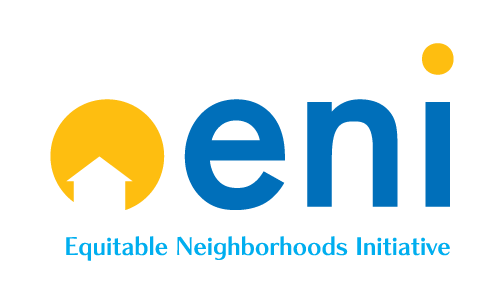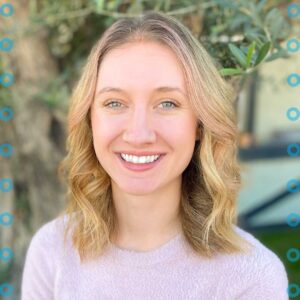June 22, 2023
– by Gabrielle Lamplugh –
Members of the Equitable Neighborhoods Initiative (ENI) team occasionally get asked about the meaning of the “E” in ENI. Some folks have questions about the meaning of equity. While others wonder what equitable health looks like practically in the communities we serve. We turned to Latisha Kennebrew, Director of the Alabama Department of Public Health’s Office of Health Equity & Minority Health (OHEMH) to help us answer these questions.
Equity (noun)
The value of being fair or impartial. Equity recognizes that people have different circumstances, so everyone is given the right resources and opportunities needed to reach an equal outcome.
Latisha Kennebrew has worked for ADPH for nearly seven years, but in 2022, she took on what she describes as her most rewarding role yet as the first Director of the ADPH’s re-envisioned Department of Health Equity and Minority Health.
OHEMH helps make ADPH’s goal of health equity a reality by working with community partners and stakeholders to ensure that all Alabamians can reach their health potential, regardless of social position. Kennebrew, who is a social worker by trade, shared that the role has inspired her in new ways.
“Before I worked out in the community, I could never see the positive side of things because I am a social worker by trade – I saw a lot of the bad versus the good,” Kennebrew shared.
Health disparity data in Alabama can be quite discouraging, and the effects of healthcare inequity are seen across patient populations. According to the Kaiser Family Foundation, Black and Hispanic Alabamians were much less likely to receive regular medical care than their white counterparts, with 11% and 14.8% of these respective populations reporting they had not seen a doctor in the past year. Alabamians who identify as Black, Hispanic and Asian American Pacific Islander are also more likely to report poor health overall, including a greater number of poor mental health days. These data points demonstrate the importance of the work of Kennebrew and her team.
“Seeing [the positive] side of things makes a big difference and is rewarding,” Kennebrew continued. “You know that you’re helping people who otherwise wouldn’t have been helped – they would have been overlooked.”
[COVID-19] shined a spotlight on and put the health equity lens to these communities. It showed us how we had all these communities that didn’t have access to care… you saw a lot more of these populations either passing away or getting severely sick or ill.”
Latisha Kennebrew, Director of ADPH’s Office of Health Equity & Minority Health
Currently, the Office of Health Equity and Minority Health is managing several projects that aim to improve data collection, expand healthcare resources, provide training, and establish a common understanding of health equity throughout the state. Many of OHEMH’s programs, in particular the data collection projects, were developed in response to the COVID-19 pandemic. One of these programs is ENI.
“[COVID-19] shined a spotlight on and put the health equity lens to these communities,” Kennebrew explained. “It showed us how we had all these communities that didn’t have access to care… you saw a lot more of these populations either passing away or getting severely sick or ill.”
However, Kennebrew emphasized that one important piece of all their projects is creating common language and understanding about what health equity is.
“Equity in our eyes is where everyone is presented with the same level of health care access,” Kennebrew explained, emphasizing the importance in not just providing people with the same resources, but instead making sure people have the resources necessary to have their needs met.
When it comes to identifying communities’ specific needs – and making sure those needs are met – Kennebrew stressed the essential role played by community partners, such as the Equitable Neighborhoods Initiative’s community liaisons.
We have communities that we’ve never been able to reach – even within our department. [ENI community liaisons] are doing a great job of that…they’re able to see what these communities are needing and they’re able to provide those services and if not, they reach out and find a way to get access to those services in those communities.
Latisha Kennebrew
“If you don’t understand the people that you’re helping, you have to look at it [and ask] are you really helping that person?” Kennebrew reflected. “I’m really proud of the partners that we have because they are out in those areas that you wouldn’t normally see healthcare professionals working… and the people in these communities appreciate it.”
Kennebrew also highlighted how the dynamic between community partners and OHEMH itself serves as an example of equity. OHEMH values community partners as experts on the communities they serve, and Kennebrew emphasized how effective these partners are.
“Instead of us trying to tell our partners what they should be doing, we actually listen because we understand that they have the workers who are out there,” Kennebrew said. “Their boots are actually on the ground, they’re the ones out doing the work, and they’re the ones who are communicating with these communities.”
“If we’re trying to get information, we [at ADPH] may get one question answered,” Kennebrew continued. “But those community health workers – those liaisons that are living in those communities – they’re going to get all 17 of those questions answered, because they can relate to the actual community and [the community] trusts them.”
In closing, Kennebrew shared the special role that ENI community liaisons play in community outreach, helping OHEMH expand their network.
“We have communities that we’ve never been able to reach – even within our department,” Kennbrew shared. “[ENI community liaisons] are doing a great job of that…they’re able to see what these communities are needing and they’re able to provide those services and if not, they reach out and find a way to get access to those services in those communities.”
As Kennebrew and her colleagues demonstrate, health equity in action requires listening to and following the lead of communities most impacted by health disparities. ENI is proud to be a partner in ADPH’s efforts to improve health equity across Alabama. We look forward to continuing to share what we learn as we work alongside leaders in health equity throughout the state.


